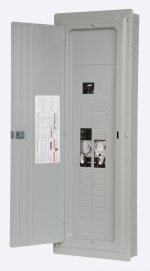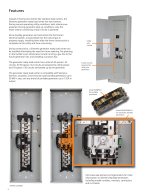IHDiesel73L
Silver Member
- Joined
- May 13, 2010
- Messages
- 167
We just got power back after four days out in Northwest NJ due to the early snowfall on trees that still have most if not all of their leaves. My town looks like a bomb hit it with the amount of splintered trees, broken poles, downed wires, etc... I have a generator and it allowed me to save the food in our refrigerator and chest freezer (a whole season worth of venison), keep the blower on my wood furnace running, and drain our sumps every few hours to keep the basement from flooding, but I was doing that with extension cords run through a window and all over the house. Far from ideal. It seems like we're getting these days long outages due to downed trees from storms at least once a year now, so it's time to install an inlet plug/interlock switch so that I can safely feed power to the panel and use breakers to route it wherever I need it. If I upgrade my generator I can also run my electric HWH as well-we were nice and warm but the cold showers were a little rough.
Right now I have a very basic generator-it's a Craftsman/Generac 4500W/7.8HP unit that's really intended for use on a jobsite. I got it free because it was not running-all it needed was a good carb cleaning. In addition to the 120V/15A household receptacles it has a 240V/30A receptacle as well. So given that I could simply buy a 30A inlet plug, wire to handle 30A, and a 30A breaker for the panel and be done with it. However, I notice that there are also 50A plugs. Since I plan to upgrade my generator anyway, would it be wise to install a 50A setup right off the bat? Based on my needs I think the biggest unit I would probably go with would be between 8 and 10kW. If I do go that route, I know what I need in terms of a plug and breaker, but what size/type of wire do I need? 6 gauge? Solid or braided?
Right now I have a very basic generator-it's a Craftsman/Generac 4500W/7.8HP unit that's really intended for use on a jobsite. I got it free because it was not running-all it needed was a good carb cleaning. In addition to the 120V/15A household receptacles it has a 240V/30A receptacle as well. So given that I could simply buy a 30A inlet plug, wire to handle 30A, and a 30A breaker for the panel and be done with it. However, I notice that there are also 50A plugs. Since I plan to upgrade my generator anyway, would it be wise to install a 50A setup right off the bat? Based on my needs I think the biggest unit I would probably go with would be between 8 and 10kW. If I do go that route, I know what I need in terms of a plug and breaker, but what size/type of wire do I need? 6 gauge? Solid or braided?



